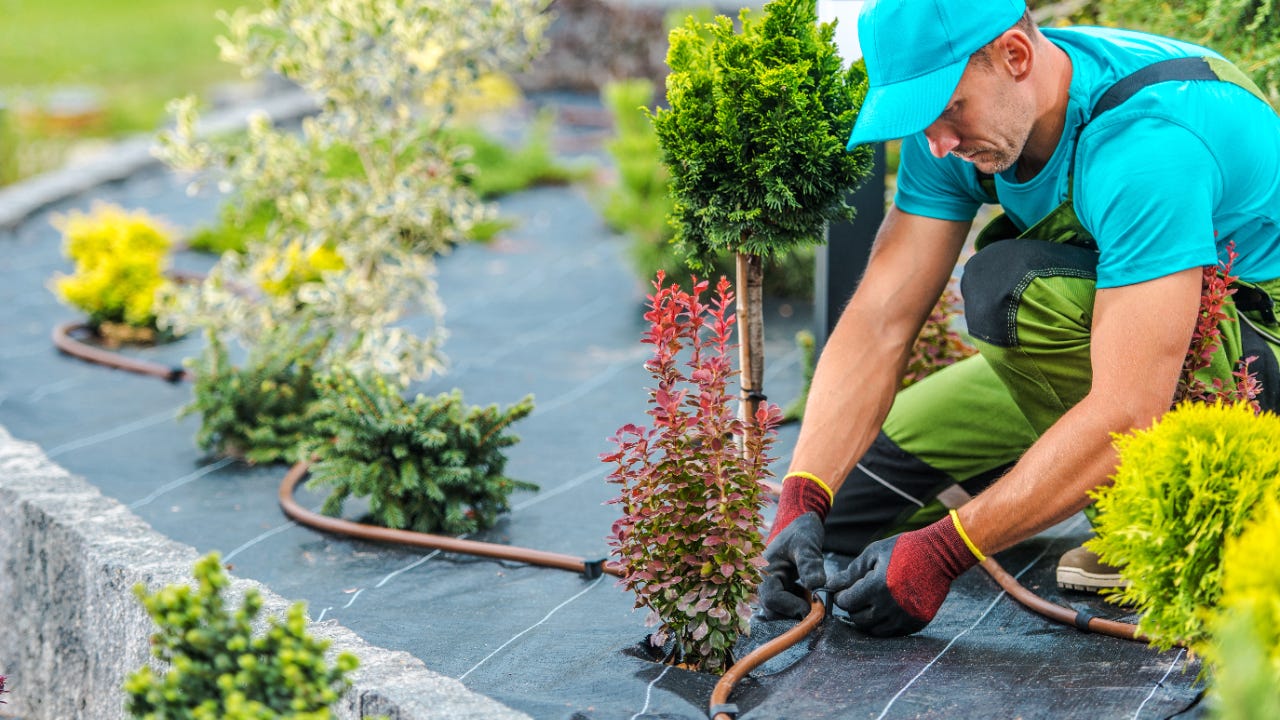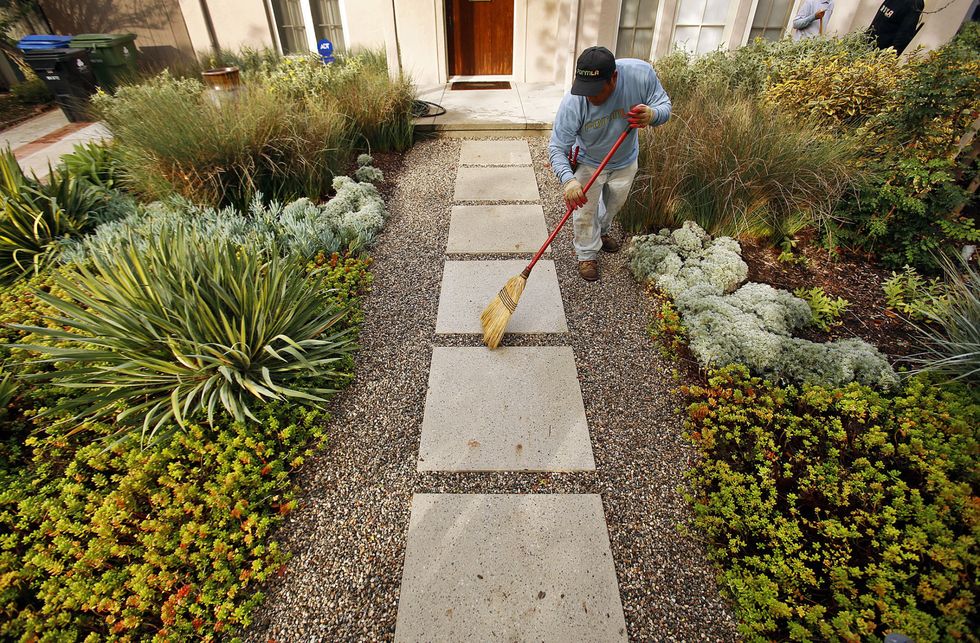A Comprehensive Overview to Creating and Implementing Effective Landscaping Solutions
The art and science of landscaping expand beyond plain aesthetic appeals; they involve a thoughtful combination of layout principles, ecological stewardship, and useful application. What strategies can one utilize to ensure these landscapes not only prosper but likewise grow in harmony with their environments?

Understanding Landscape Layout Principles
One might question what foundational components contribute to effective landscape layout. At its core, effective landscape layout depends upon a number of key concepts that guide the setup and choice of components within an area. These concepts include unity, equilibrium, rhythm, and proportion, each serving to produce an unified outdoor setting.
Unity refers to the natural relationship among numerous components, making certain that they work with each other aesthetically and functionally. Balance can be attained with balanced or asymmetrical arrangements, enabling the landscape to really feel stable and inviting. Percentage involves understanding the range of elements in connection with each other and the surrounding atmosphere, advertising visual harmony and convenience.

Analyzing Your Outdoor Space
Prior to applying the concepts of landscape layout, a detailed assessment of your outside room is vital. This preliminary examination assists specify the scope of your landscaping job and makes sure that your layout aligns with the distinct attributes of your property. Begin by evaluating the dimensions of your area, taking precise dimensions to recognize the available area for various elements such as paths, patio areas, and yards.
Next, observe the existing functions of your landscape, including topography, soil high quality, and drain patterns. These aspects dramatically affect plant choice and placement. Furthermore, evaluate the sunlight direct exposure throughout various areas throughout the day, as this will impact the sorts of plants that grow in your yard.
Consider the microclimates produced by frameworks, trees, and various other barriers, as they can impact temperature level and moisture degrees. Lastly, make note of any kind of existing plants or hardscape aspects that you desire to get rid of or maintain. This comprehensive examination prepares for a educated and effective landscaping option, making certain that your style is not just cosmetically pleasing yet sustainable and additionally functional for many years to come.
Sustainable Landscape Design Techniques
These practices not only promote eco-friendly balance however likewise enhance the useful and aesthetic worth of a landscape. Applying reliable irrigation systems, such as drip irrigation, reduces water waste and guarantees that plants get appropriate moisture (Palm Desert Landscaping).

Another effective strategy is the calculated placement of shrubs and trees to supply all-natural windbreaks and shade, thus lowering power costs (Palm Desert Landscaping). Rain gardens can be incorporated right into the landscape layout to handle stormwater runoff efficiently, filtering contaminants before they get in waterways
Picking the Right Plants
Choosing the right plants for your landscape is crucial to accomplishing both aesthetic appeal and ecological consistency. The procedure begins with an understanding of your regional climate, soil conditions, and the particular microenvironments within your landscape. Analyzing elements such as sunlight direct exposure, wetness degrees, and existing flora will certainly aid you choose plants that flourish in your distinct setup.
Think about integrating native plants, as they are well-adapted to local problems, require much less upkeep, and assistance regional wildlife. Additionally, choosing a varied array of species can improve biodiversity while reducing the risk of disease and pest episodes. It is important to review the development routines, growing periods, and seasonal colors of prospective plants to create a dynamic and natural landscape.
In addition, think of the meant use of the space; for circumstances, if the location will experience high foot web traffic, choose for resilient ground article covers. By attentively picking plants that line up with both your ecological demands and aesthetic objectives, you can produce a sustainable landscape that not only enhances your residential property however also adds positively to the bordering environment.

Application and Upkeep Strategies
When the appropriate plants have been selected for your landscape, the focus moves to efficient execution and ongoing maintenance methods. Effective installment begins with proper site prep work, that includes soil testing to establish nutrient degrees and pH, followed by changing the soil as needed. Carefully organize plants according to their growth routines and light demands, making certain adequate spacing to promote healthy growth.
Irrigation is a critical aspect of application. Establish a watering routine that thinks about the certain demands of each plant varieties, changing for seasonal adjustments. Making use of drip watering systems can improve water effectiveness and minimize overflow.
Maintenance approaches must be implemented to ensure the long life about his and vigor of your landscape. Normal jobs include weeding, mulching, and pruning to control development and protect against condition. Fertilizing must be carried out based upon soil tests, providing the essential nutrients without over-fertilizing.
Checking for illness and pests is essential; early discovery can protect against considerable damage. Last but not least, seasonal changes to maintenance routines, such as winterizing perennials and preparing for springtime growth, will make certain that your landscape stays visually enticing and healthy year-round.
Final Thought
Successful application and recurring upkeep further ensure the durability and vitality of landscapes. By integrating these components, landscapes can be changed right into Read Full Report attractive, practical settings that advertise biodiversity and contribute favorably to community health.
One could question what foundational elements add to efficient landscape layout. At its core, successful landscape style pivots on a number of crucial principles that direct the plan and choice of components within an area.Choosing the right plants for your landscape is essential to accomplishing both aesthetic appeal and ecological consistency. It is essential to review the development habits, flowering periods, and seasonal colors of prospective plants to create a natural and dynamic landscape.
When the right plants have actually been chosen for your landscape, the focus shifts to reliable application and recurring maintenance methods.